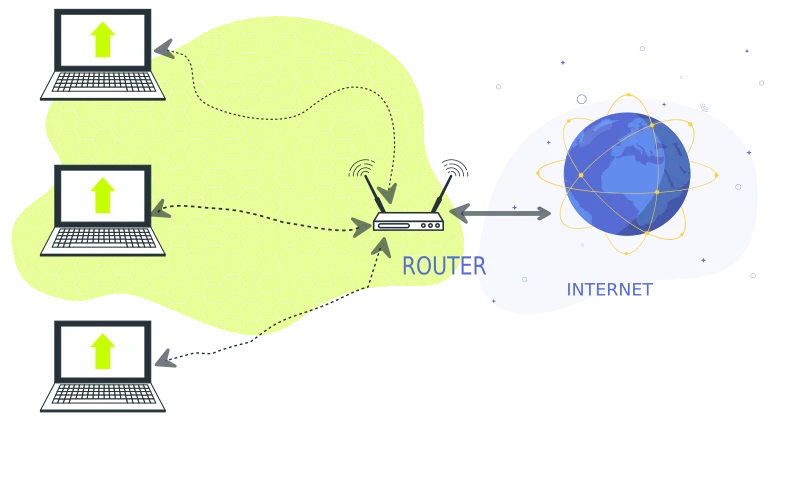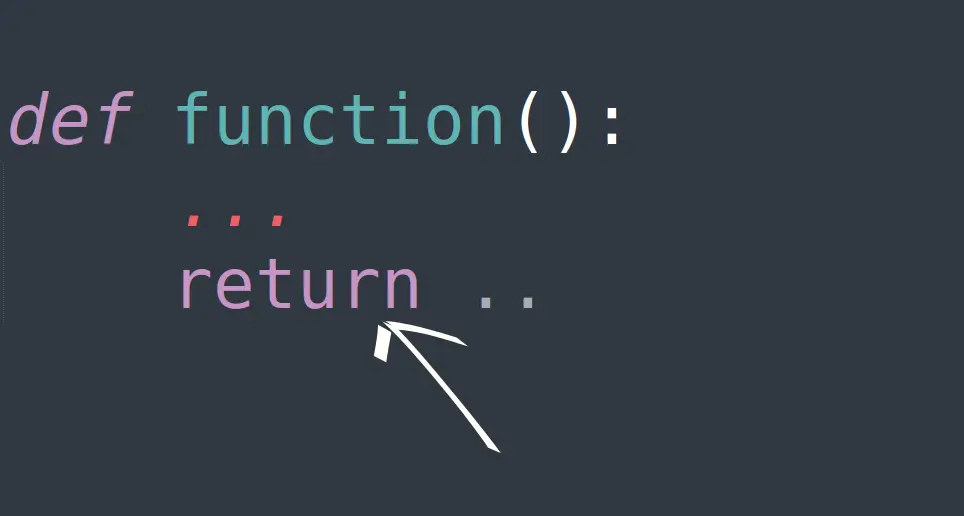What is an Local Area Network(LAN) and It’s Working
Last updated: November 14, 2025 By Bhawna Bairagi

A local area network (LAN) is a high-speed data network that connects computers or other devices within a limited area, mostly ranging from 10 meters to 1 kilometer, to make easy communication and resource sharing. A LAN usually links workstations, personal computers, printers, servers, and various other devices. A Local Area Network may connects one or two people in an office or home or thousands of users across a corporate campus. In the 1960s, developers initially created LANs for use in universities and research facilities to allow users to communicates and share resources with others in the same building or local area. Let’s explore What is an Local Area Network(LAN) and It’s Working.
What is an Local Area Network(LAN) and It’s Working

What are the advantages and features of LAN
- Increased Privacy
- High-Speed Connectivity
- Shared access to device and application
- Files exchange between connected users
- Adaptable Transmission Mediums
- Relationship between the client and the server
- Resource sharing
- Internet sharing
How do Local Area Networks work with examples
A LAN creates a network using ethernet cables, switches, routers and wi-fi. The network assigns a unique Internet Protocol (IP) address to each device.
LAN may use Ethernet or Wi-Fi to connect devices within the network, and most LANs connect to the internet through a router. For larger network it may use switches devices.
What is virtual LAN (VLAN) and why it is used
A Virtual Local Area Network (VLAN) is a technology where network administrators partition a physical network into multiple, separated virtual networks. To isolate the groups from each other, even when connected to the same physical networks, such as switches and routers, they divide a single LAN into several VLANs.
Key characteristics of VLANs
- Network Segmentation: VLANs help in logically seperating networks, which can increase security and reduce broadcast traffic by ensuring that data sent within a VLAN is only received by devices connected on that VLAN.
- Improved Security: Network administrators can increase security by separating sensitive data or systems into different VLANs, which helps prevent unauthorized access and limits the spread of malware or other security threats.
- Efficient Use of Resources: Generally VLANs allow for the logical grouping of devices without their physical location, make easier network management and better utilization of network resources.
- Simplified Network Management: In a word VLANs can simplify the management of networks, especially in large organizations, by allowing for easier configuration and administration of network policies.
How does Local Area Network send data
A Local Area Network(LAN) uses Transmission Control Protocol/Internet Protocol(TCP/IP) to send data from one node to another nodes in the form of packets. Generally a LANs uses multiples devices and severals methods to send data to its nodes.
- Ethernet: Mostly LANs uses Ethernet network cables to connect devices, which sends data in form of packets from one device to another device. Ethernet network uses a protocol to manage data transmission and their collisions.
- WiFi: Wireless LANs uses radio wave to transmit data from one end to another. Wifi uses radio frequencies to send and receive data rather than
physicalcables. Radio wavesis an kind ofeletromagnetic wavethat can travel through the air. Wi-Fi Access Point act as hub in wireless network to send and receive data from wireless devices, such aslaptops,smartphonesandtablets. Access point essentially creates a wirelessbubblethat authorize devices to connect and communicates. The access point uses specificradio frequencies(usually2.4 GHzor5 GHzbands) to communicates with devices. When a devices want to send data, it send signals toaccess points, which then send data through the network. Similarly, access point receives data from network and send it to another devices. In a word,Wi-Fiallows devices to connect to a network and exchange data without needing anyphysical cables, using radio waves forwireless communication. - Switches: In wired LANs switch is an device that manage data traffic by directing
packetsto device they are intended for, based onMAC address. - Routers: In both Wired and wireless LANs router can direct data between different network or segments within a
LAN. - Protocols: LANs use various communication protocol such as
Transmission Control Protocol/Internet Protocol(TCP/IP)to ensure that data is send and received correctly. It manageerror checkinganddata integrity.
How do LANs connect to each other
LANs connects using multiple methods. LAN uses routers, gateway, switches and network hub to connect each other.
- Routers: Router is an device that connect different Local Area Networks. It assign
IP addressto each device to manage thetrafficbetween network and devices, router use this method totransmitdata to its correct destination. - Gateways: It is similar to routers, connect different LANs but can also perform different functions like translating different
network protocols. It help to connect LANs that use different type ofcommunication technologies. - Switches: When multiple LANs are on same
physical networks, switchs help to connect them together. This setup authorizedeviceson different LANs to communicate as if they were on thesame network. - Network Hubs: Hubs might be used to connect
multiplesLANs, but they are less common today.Hubsare basic devices that send data to all connected devices, which can lead to networkinefficinecies. In simple word,routersandgatewaysact asbridge, linking different LANs together, whileswitchandhubconnect devices within the same area.
How do LAN devices communicate
LAN device communicate over data packets transmitted over cables or wireless signals. Basically each devices has it’s own unique MAC address, that can be used to identify it on the network. When a device wants to send data, it packages it into packets with the destination MAC address. Switches use MAC address to send packets to the correct device. Protocols like TCP/IP ensure data is sent and received correctly. In wireless LANs Wi-Fi access points manage the communication b/w devices using radio waves.
How to create professional lead collecting form for website
Conclusion
So I hope our this articles (What is an Local Area Network(LAN) and It’s Working) helped you to understand the backbone concept of Local Area Network.












































Leave a Comment